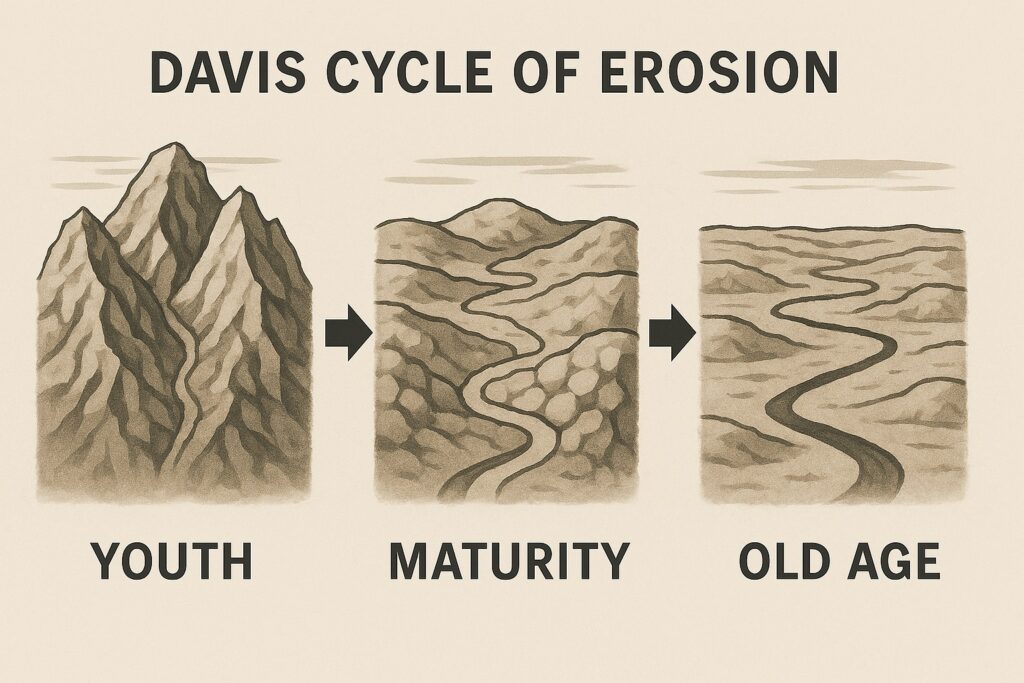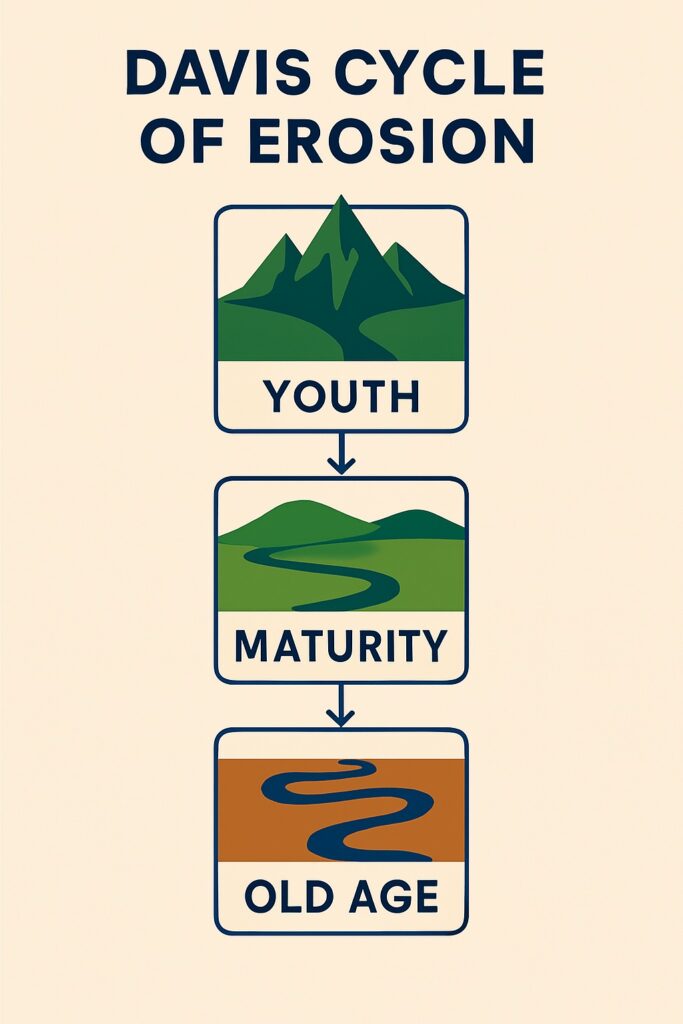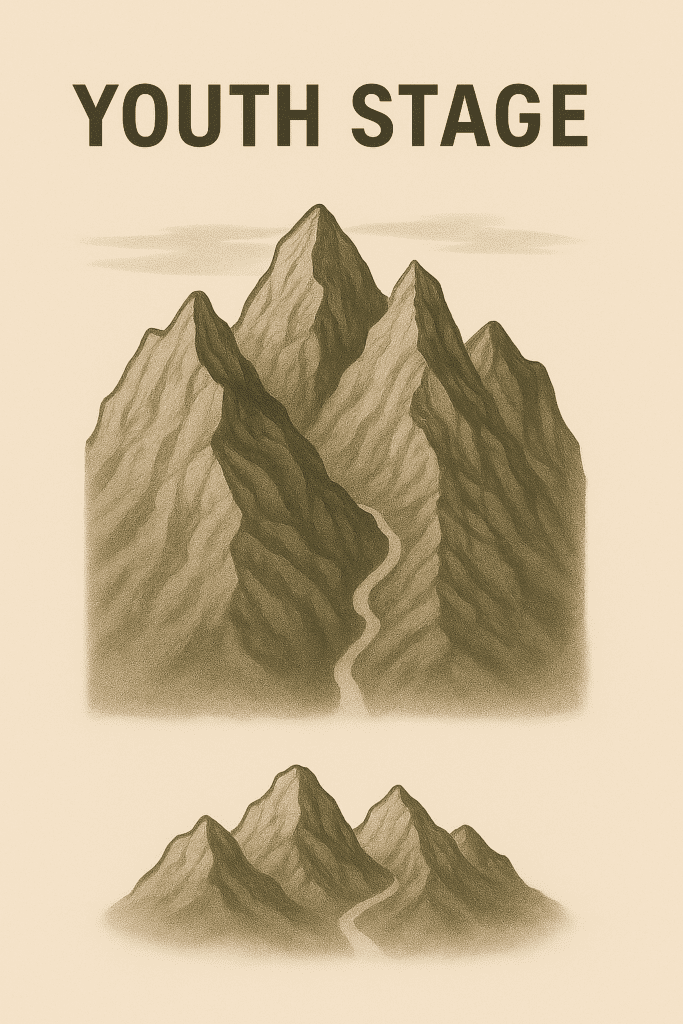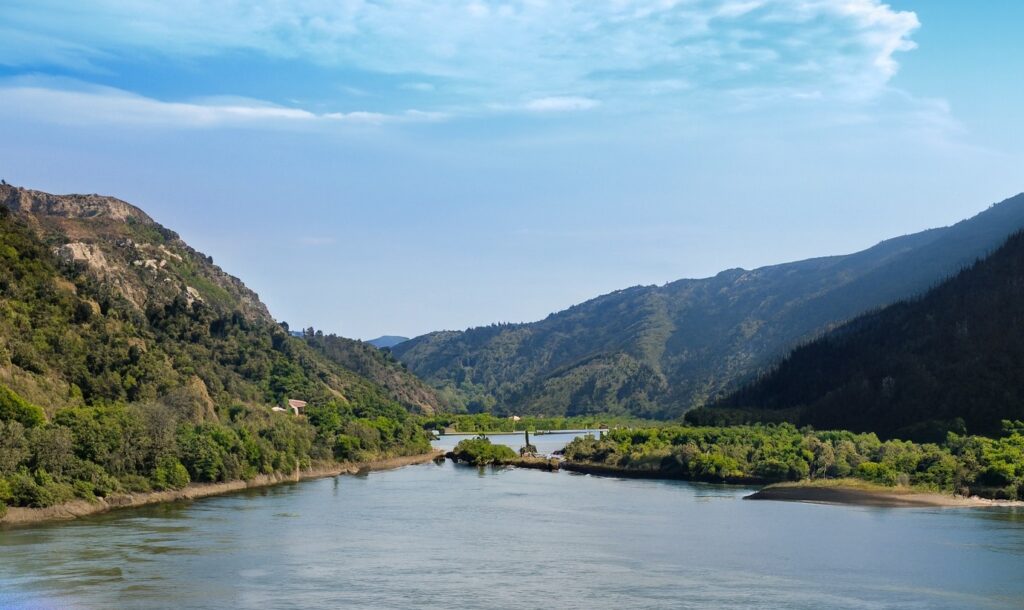Davis Cycle of Erosion is a theory that aims to explain the process of Evolution of Landform through Geomorphic Process. The theory was propounded by American Geographer William Morris Davis in the year 1899. According to the theory, the landforms undergoes a series of process in stages. These stages are cyclic in nature and resembles the life cycle of human beings.

Table of Contents
Trio of Davis
According to the theory, there are three factors that affect the cycle of erosion, they are Structure, Process and Time. Structure refers to the Rock Composition and its physical and chemical properties. The structure plays significant role in deciding the rate of erosion by river.

Process indicates the Endogenetic and Exogenetic forces acting on the landform. Time means the span of time for which agents of erosion acts on the landscape. It is the most important factor that defines current relief features. According to Davis, Landform is a function of Structure, Process and Time.
"Structure, Process, and Time are the trio of Davis."
Assumptions in Davis Cycle of Erosion
The Model of Cycle of Erosion aims to explain “How the Landform Evolve Over Time under the influence of Erosion?”. Davis considered following assumptions for his theory.
- The landforms evolve through the interaction of Endogenetic and Exogenetic Forces.
- The changes in geomorphic features takes place in an orderly and cyclic manner.
- Streams of the river continues downward erosion till the graded condition is reached.
- Upliftment is a very rapid process.
- Erosion of landmass does not start till the process of upliftment gets completed.
- The underlying geology and climate of the region are stable over entire time frame.

Stages of the Davis Cycle of Erosion
There are three stages in the cycle of erosion, these are Youth Stage, Mature Stage and Old Stage.


Youth Stage
It starts with the completion of the process of upliftment. In this stage, the land is high and slope is steep. The drainage system is not well integrated. Erosion in the youth stage is dominated by the vertical erosion. The valleys are V shaped and streams move fast and have more energy.



There is an absence of lateral erosion in this stage and summits of the mountain remains unaffected. Hence the absolute relief of the landform remain the same. It implies that UC will remain parallel to the X axis (see the above diagram). Absolute relief means the height of the summit with reference to sea level.
Further, as the vertical erosion dominates, valley of the landform gets deeper and deeper and the LC comes down gradually. Hence, the relative relief becomes more significant. Relative relief refers to the difference between the heights of higher peaks and the valleys.


Maturity Stage
Maturity stage is the second stage of the model. The river drainage system is not well integrated. The lateral erosion dominates and the vertical erosion is almost absent. Valleys are wider and shallower when compared with the youth stage.


The kinetic energy of the streams comes down. The river stream moves slowly and meandering leading to the formation of Meanders, and Oxbow lakes. The shape of the valley takes U shape in place of V shape in the youth stage. There is significant reduction in the height of the summit hence UC comes down and LC remains unaffected. Therefore, both absolute and relative relief comes down.
Old Stage
It is characterised by low relief landscape, which means land is gentle and almost flat. There is negligible down cutting but the lateral erosion continues. The U-shaped valley gets converted into interconnected concave valleys. The valley is broad and flat, streams move slowly and keeps meandering. The deposited sediments form Peneplain.
Peneplain is an almost flat area of bedrock formed nearly at the sea level. There is absence of any marked relief and they are formed as the result of a long period of erosion. However, some irregularities are found in the Peneplain as some summits stands still, they are called the Monadnocks.


Criticism of Davis Model of Cycle of Erosion
- Davis Cycle of Erosion is very simple and over generalized theory that aims to explain the long term evolution of landscape.
- The theorem does not take into account complexity and variation in natural landscape. The landscape varies according to the local factors such as tectonic activity, geology, climate and vegetation of the region.
- The Process of erosion will not wait for the upliftment to get completed.
- Upliftment is not a fast process and takes millions years to get completed.
- The theorem does not account for the disturbances in the cycle of erosion like tectonic activity, volcanoes etc.
- The model is based on the assumption of steady state condition, but in practical world such situation does not exist.
- According to the theory, the cycle of Erosion follows a sequence of Youth, Mature and Old stage. However, such sequence is not always found in nature.
- There is yet another criticism for focusing primarily on the process of erosion and ignoring biological and biochemical processes.
- The theorem treats landscape as static and passive under the influence of different processes.